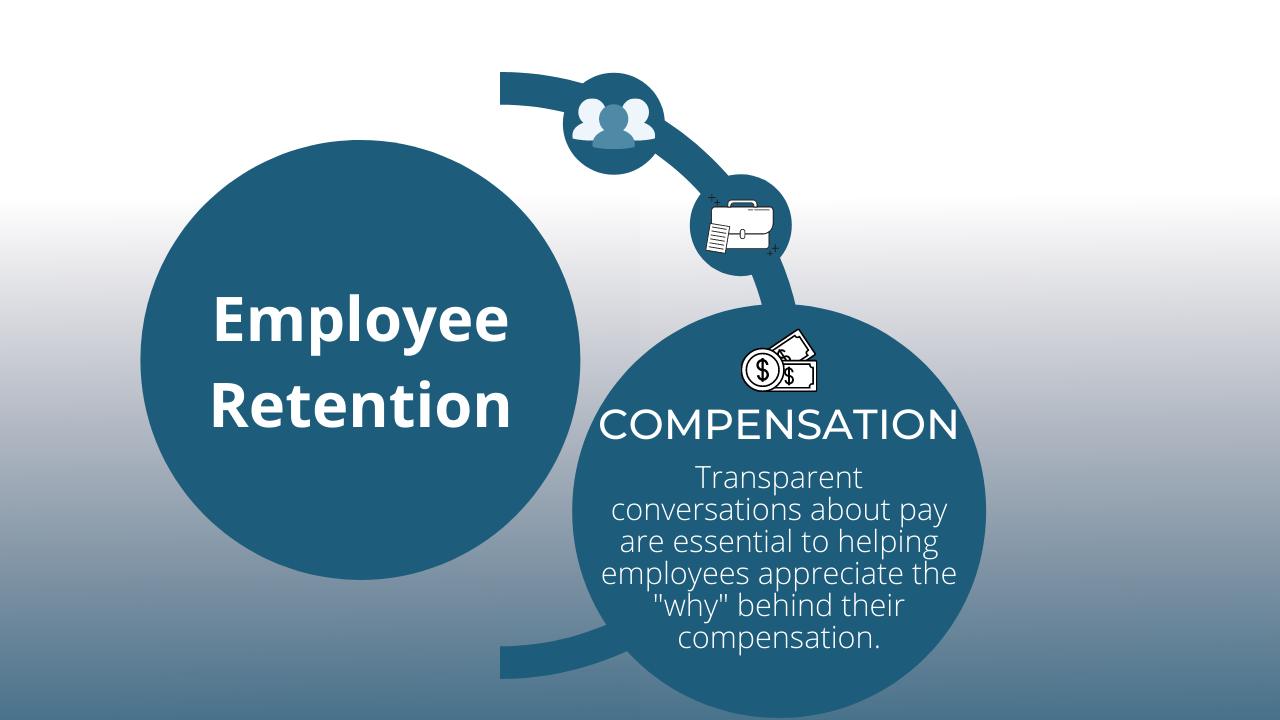What Employees Need: Fair Pay and Incentives
Dec 22, 2021
A local chiropractor offered to volunteer time to provide neck and shoulder massages for our staff. The line was long and the gift was wonderful. While it likely won’t make up for too little money, it sure does communicate value to your people.
As we begin the conversation about compensation, too many nonprofit leaders I talk to mention first, “Our salaries are low” or “We can’t pay much” in an apologetic way. What if we changed the conversation? What if we started talking about what we CAN offer and DO offer instead of what we don’t? What is the whole package you offer?

What Is A Fair Wage for Your Organization?
A fair wage is important. It needs to be “enough.” So, start by conducting a salary review every other year. Know what the market range is for similar positions in an organization your size within your geographic area. Don’t make your comparison to the big corporations. Most of the people who are working for you are looking for something uniquely different than what a large organization offers. Know how you compare to organizations like you and put a plan in place to increase salaries over time if you are not paying “enough.” Consider sharing your research and salary ranges in conversation with your people for full transparency and to build trust in the integrity of leadership. If you are not ready, spend some time in 2022 thinking through how you can give structure to your compensation model.
How Can Benefits Enhance Pay?
Benefits are part of the package, so be intentional about the decisions you make regarding the benefit packages you offer and acknowledge the personal impact these decisions have on your people. Connect the whole picture of salary and benefits together for your people so they see ALL the benefits of working for your organization. Need a few practical ideas to do this? Check these ideas out:
- Include ALL benefits in your offer letters for job candidates (salary, insurance or retirement benefits with the estimated costs, time off, paid leaves, etc.)
- Provide annual compensation information for existing employees in writing that includes increases in salary, benefits or other changes to the packages you provide.
- Collect input from existing employees regarding what benefit options they value most when cost or policy requires changes.
WARNING: Too often benefits are separated from compensation and instead assessed as part of rising budget costs. When choosing to pass on costs of benefits to employees by changing contributions, selecting a higher deductible plan or reducing retirement match options ... it changes compensation.
If you cut benefits without also increasing wages, you can inadvertently create a salary reduction that points people to start looking elsewhere.
What Other Incentives Can You Offer?
In those moments when you do need to change benefits and it impacts employee compensation, don’t forget to highlight incentives as part of the whole package. In small organizations, we have to get creative with those incentives! You may not explicitly state them or promote them, yet they are often the reasons that people love being a part of the team, such as:
- Participation in your programs or events for no or low cost
- Flexible scheduling
- Remote work options
- Attending conferences or specialized training
- Tuition reimbursement
- Gym discounts
- Walking groups or employee social opportunities
- Opportunities for recognition and rewards
Compensation and all the elements that surround it speaks clearly and tangibly to your people about value. It enhances a culture that communicates the tangible ways you care for your people.

When you put together a solid culture, fulfilling work along with fair and transparent compensation you have the “whole package” that fuels retention.
Next Steps:
- Develop a compensation model that works for your organization. Do salary research, explore what other nonprofit or small organizations are doing, and ask your people what matters. If you have noticed an increase in employee turnover, then consider a consultant to help you engage in the process of creating what is right for you and your team.
- Get creative to match what you offer to what your people want. Surveys, conversations, and any other feedback loops you already have in place can be useful strategies to find out what your people want. You might be surprised at the simple changes you can make if you employ a little creativity to meet your people’s expectations.
- Start communicating positively about what you DO offer. Avoid talking about what you DON’T offer. Give people a reason to want to work with you rather than apologizing for what you think you can’t offer.
If you do the work of thinking through your compensation model as a “whole package” and communicate the complete picture of benefits, incentives, culture, and great work opportunities you change the conversation.
Need some support thinking through your compensation model? Grab a FREE 30 minute strategy session and let’s assess together what you need. Then, join me in the next blog to explore how hiring right impacts retention from the get go!
Stay Connected
Get resources, motivation, and leadership support
delivered straight to your inbox.
We hate SPAM. We will never sell your information, for any reason.


